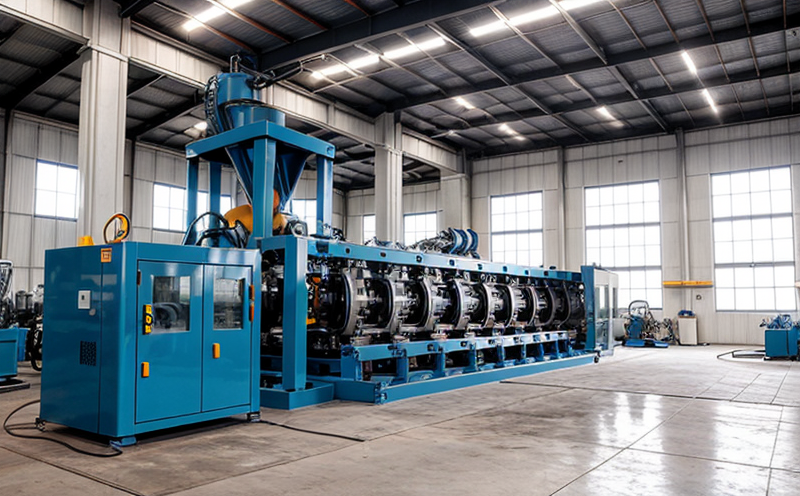ISO 3821 Rubber Hose Performance Testing for Welding Equipment
The ISO 3821 standard provides a comprehensive framework for assessing the performance of rubber hoses used in welding equipment. This service ensures that rubber hoses meet stringent requirements concerning physical and mechanical properties, chemical resistance, and durability. The testing process is crucial for ensuring safe and reliable operation of welding equipment, which can have significant implications on workplace safety and productivity.
The primary focus of this ISO 3821 compliance testing involves the evaluation of hose integrity under various stress conditions including internal pressure, flexing, and dynamic loading. This assessment ensures that rubber hoses are capable of withstanding the rigorous demands placed upon them during welding operations. Compliance with these standards is essential for maintaining optimal performance and preventing potential hazards associated with equipment failure.
The testing methodology outlined in ISO 3821 encompasses multiple phases designed to simulate real-world usage scenarios. These include initial visual inspections, dimensional checks, pressure tests at specified intervals, burst strength evaluations, and flexural fatigue assessments. Each stage plays a critical role in ensuring that the rubber hoses meet stringent performance criteria set forth by this international standard.
During the testing process, careful attention is paid to proper specimen preparation, which involves selecting appropriate samples based on intended application requirements. Proper handling techniques are also employed throughout all stages of the test sequence to prevent any unintentional damage or alteration of properties that could affect results.
The equipment utilized in performing these tests includes specialized hydraulic presses capable of generating controlled pressures up to specified limits as defined by ISO 3821. Other essential components include temperature control systems for maintaining consistent environmental conditions during testing, and digital measurement devices capable of accurately recording critical parameters such as force applied or displacement achieved.
Once completed successfully, the results are meticulously documented using standardized reporting formats prescribed within ISO guidelines. This documentation serves several purposes including providing clear evidence of adherence to specified standards; facilitating future comparisons between different batches or types of materials; and aiding in troubleshooting any issues encountered during production processes.
In summary, compliance testing according to ISO 3821 is an indispensable part of quality assurance programs aimed at producing high-quality rubber hoses suitable for use with welding equipment. By adhering strictly to this internationally recognized standard, manufacturers can ensure their products meet strict performance expectations while minimizing risks associated with improper design or manufacturing practices.
Scope and Methodology
The scope of ISO 3821 rubber hose performance testing for welding equipment is broad but focused on key aspects that directly impact the reliability, safety, and longevity of these hoses. The standard covers various types of hoses used in welding applications, specifying detailed procedures for conducting mechanical property tests such as tensile strength measurement, elongation determination, and burst pressure evaluation.
Additionally, chemical resistance tests are conducted to ensure compatibility with different types of gases employed during welding processes. Flexibility assessments follow closely behind these mechanical evaluations since flexibility is paramount in ensuring ease-of-use and efficient operation under varying environmental conditions.
The testing methodology involves both destructive and non-destructive techniques tailored specifically for rubber hose materials. Destructive tests involve applying known loads or pressures until failure occurs, allowing engineers to determine how much stress each material can endure before breaking down completely. Non-destructive methods utilize advanced imaging technologies like ultrasonic testing or radiography to identify internal defects without compromising the integrity of the sample.
Throughout this process, strict adherence to international standards ensures accurate and reproducible results across multiple laboratories worldwide. This consistency is vital for maintaining high-quality product standards while also enabling effective communication between suppliers and end-users regarding specific performance characteristics.
Environmental and Sustainability Contributions
The implementation of ISO 3821 rubber hose performance testing for welding equipment contributes positively to both environmental sustainability and industrial safety. By ensuring that hoses meet stringent quality standards, this service helps prevent incidents such as leaks or ruptures which could lead to hazardous situations within manufacturing environments.
One significant benefit is reduced waste generation due to more accurate assessments leading to better material utilization during production processes. This efficiency translates into lower resource consumption and energy usage throughout the supply chain. Furthermore, compliant products contribute towards safer workplaces by minimizing risks associated with improper equipment operation or maintenance practices.
The use of sustainable materials in hose manufacturing aligns well with broader corporate social responsibility initiatives aimed at reducing environmental footprints. Manufacturers who adopt these testing protocols demonstrate their commitment to responsible business practices through actions like recycling waste streams and sourcing eco-friendly raw materials.
Moreover, adherence to ISO 3821 promotes innovation within the industry by encouraging continuous improvement in product design and manufacturing techniques. As standards evolve over time based on feedback from users and advancements in technology, so too do suppliers refine their offerings to meet ever-changing demands while maintaining consistent excellence.
Use Cases and Application Examples
- Welding Applications: Hoses used for gas delivery systems where pressure integrity is critical.
- Automotive Manufacturing: Rubber hoses connecting various components during assembly processes requiring flexibility and durability.
- Construction Equipment: Fluid transfer lines exposed to harsh working conditions necessitating robust construction materials.
- Plastic Processing Industries: Continuous flow systems involving hot liquids or gases demanding high-temperature resistance.
| Application Scenario | Key Performance Indicators | Test Parameters |
|---|---|---|
Gas Delivery Systems |
Burst Pressure, Flexibility, Chemical Resistance |
Hydraulic Press Testing, Visual Inspection |
Automotive Assembly Lines |
Tensile Strength, Durability Under Dynamic Loading |
Destructive Tension Tests, Non-Destructive Imaging |
Construction Machinery Operation |
Flexural Fatigue Life, Resistance to Abrasion |
Bending Machine Simulations, Abrasion Testing |
Plastic Extrusion Processes |
Infrared Thermal Imaging, Pressure Cycling Tests |
Thermographic Analysis, Hydraulic Load Application |
The above table highlights some key performance indicators and corresponding test parameters relevant to different applications of rubber hoses in industrial settings. These tests are essential for ensuring that the hoses perform reliably under diverse operational conditions.





